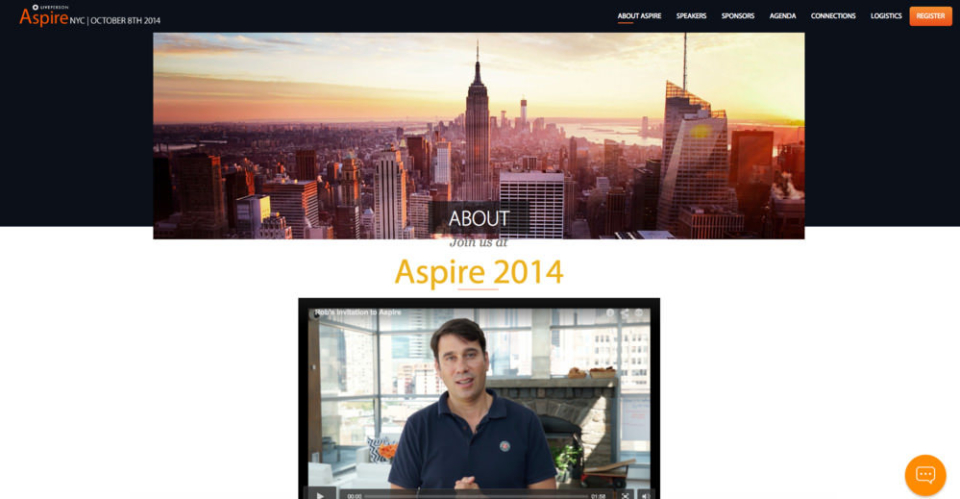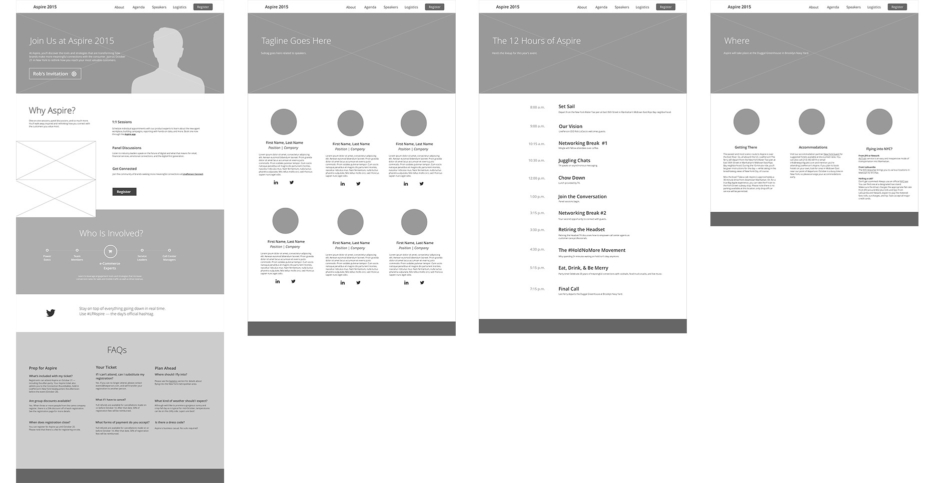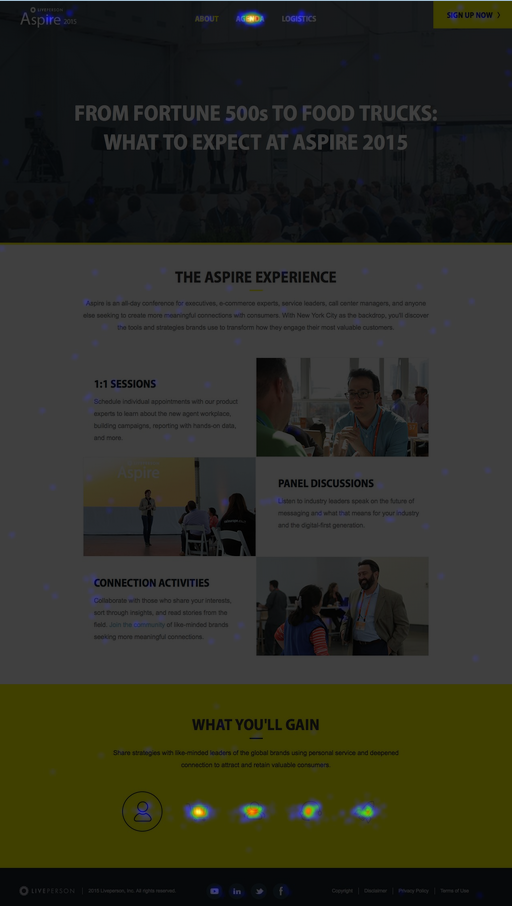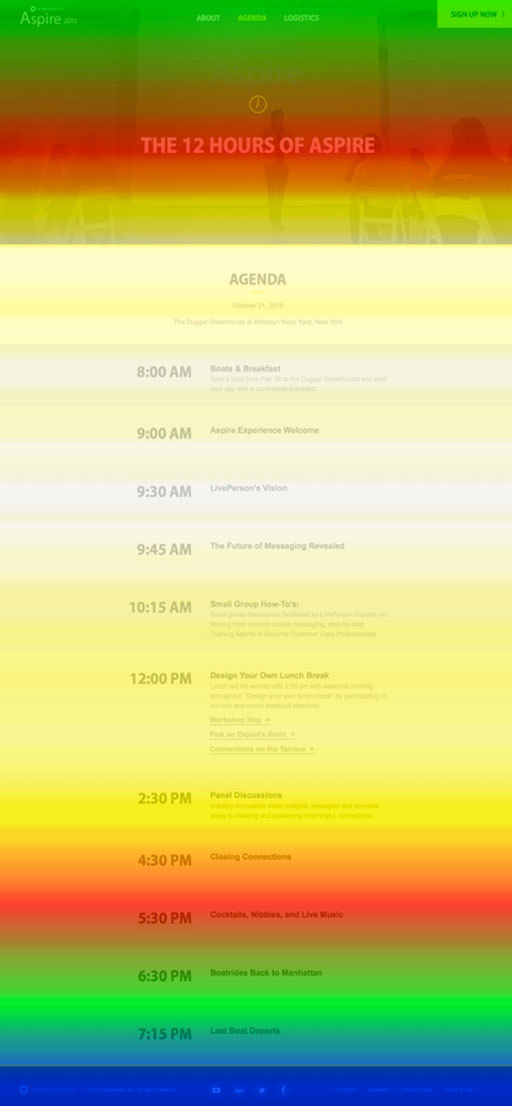Project Brief
In 2015, Aspire brought together digital engagement experts from all industries in a unique, small group setting to facilitate more relevant conversations, help attendees create valuable connections, and glean provocative insights to drive their business objectives forward. The annual conference is an interactive meeting that unveils the latest tech trends in communication and best practices for customer care professional. It also gives LivePerson an opportunity to demonstrate of the latest features of its product, LiveEngage.








